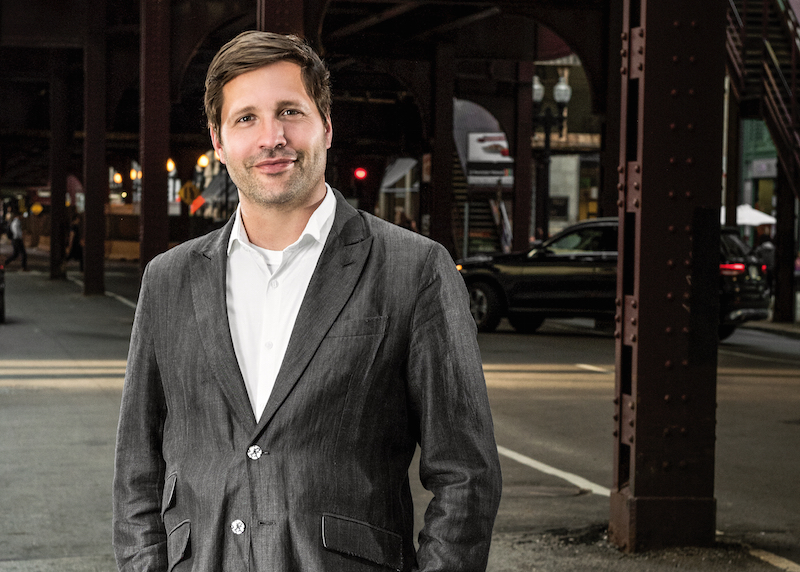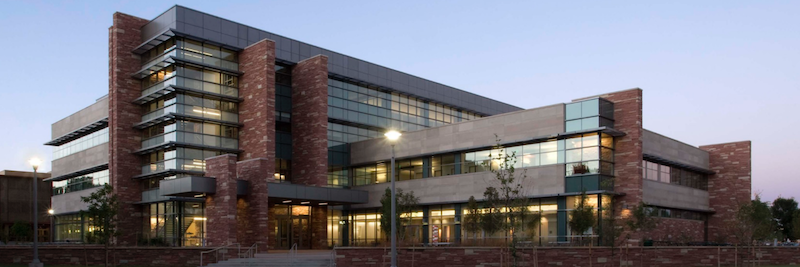Growth-minded AEC firm CannonDesign announced this morning that it will merge with Denver-based Bennett Wagner Grody Architects (BWG), a 28-year AE firm with portfolio strengths in the K-12, Higher Education, and healthcare sectors.
This alliance gives CannonDesign its first office in Colorado, and represents its second acquisition within the past few months. In September, Cannon announced that it was joining forces with Houston-based design firm FKP, whose expertise extends to healthcare, science and technology.
CannonDesign did not disclose the terms of its agreement with BWG. But Brad Lukanic, AIA, who took over as CannonDesign’s CEO 15 months ago, indicated that this deal is part of his 102-year-old company’s larger ambitions to expand by linking with strategic partners. “We’re in the mode of looking at how our practice is evolving,” he tells BD+C. “The two recent mergers are key steps” in CannonDesign’s growth framework, and are expected to help the company expand its position in the education and S+T sectors.

Brad Lukanic, CannonDesign's CEO, says his company intends to continue growing organically and through mergers with strategic partners. Image: courtesy of CannonDesign
Don Grody, AIA, a founding partner at BWG, says that about a year ago his firm started thinking about its future within a consolidating AE industry, too. It concluded that prosperity hinged on locating the right partner firm. He says the company worked up a list of 200 AE firms, and targeted 20 of them with an information piece about BWG. “CannonDesign was one of the firms that responded positively to BWG as well as to the Colorado market.”
Grody says the merger “allows us to harness new services and expertise to help our clients leverage the built environment to improve performance and create stronger futures. It gives us a very distinct perspective in the industry.”
CannonDesign has coveted a bigger presence in Denver “for a very long time,” says Lukanic. BWG’s recent projects in the state include Colorado State University’s Behavioral Sciences Building, Colorado Mesa University’s Engineering Building, and numerous projects with Kaiser Permanente. CannonDesign’s work in Colorado includes the renovation and expansion of the University of Colorado at Boulder’s Student Recreation Center, the expansion of the University of Colorado Hospital’s Anschutz Inpatient Pavilion, and the U.S. Air Force Academy’s Holaday Athletic Center.

Don Grody, one of BWG's founding principals, is in charge of innovation, quality planing, and excellence at his firm. Image: courtesy of CannonDesign
BWG’s management team, including its three principals, is staying on with the company. BWG will operate as Bennett Wagner Grody Architects | CannonDesign, and while its brand will eventually disappear, that transition process “could be fairly long,” predicts Lukanic, because Cannon Design doesn’t want to lose any of BWG’s marketing cachet.
Once its merger with BWG is completed, CannonDesign will have nearly 1,000 employees working in 19 offices in North America and abroad.
As for future expansion, Lukanic says CannonDesign is tracking markets where populations are growing and where its core business sectors are strong. He points specifically to Texas as an area where the firm wants to be a bigger player, and to construction services as an area for potential increased business.
He says that CannonDesign is also looking at “a few key international markets” for expansion, both within and outside of North America.
Lukanic believes that, by operating multiple offices, CannonDesign has a better shot at attracting and retaining the “emerging leaders” it will need to be successful in the future. Its geographic diversity “gives our people more lifestyle options.”
Related Stories
| Oct 4, 2022
In dire need of affordable housing, Aspen, Colo. will get a development that provides 277 affordable homes
A few miles from downtown Aspen, Colo., a development will provide 277 new affordable homes for an area experiencing a dire affordable housing crisis.
Green | Oct 3, 2022
California regulators move to ban gas heaters for existing buildings
California regulators voted unanimously recently on a series of measures that include a ban on the sale of natural gas-powered heating and hot water systems beginning in 2030.
| Oct 3, 2022
The College of the Holy Cross completes a $110 million performing arts center
In Worcester, Mass., a one-hour drive from Boston, the College of the Holy Cross has completed its $110 million Prior Performing Arts Center.
Resiliency | Sep 30, 2022
Designing buildings for wildfire defensibility
Wold Architects and Engineers' Senior Planner Ryan Downs, AIA, talks about how to make structures and communities more fire-resistant.
| Sep 30, 2022
Manley Spangler Smith Architects partners with PBK in strategic merger
Manley Spangler Smith Architects (MSSA), a Georgia-based, full-service architectural firm specializing in educational and municipal facilities, announced today a significant development aimed at increasing its capabilities, expertise, and suite of services.
| Sep 30, 2022
Lab-grown bricks offer potential low-carbon building material
A team of students at the University of Waterloo in Canada have developed a process to grow bricks using bacteria.
| Sep 29, 2022
FitzGerald establishes Denver office
The new location bolsters FitzGerald’s nationwide reach and capitalizes on local expertise and boots-on-the-ground to serve new and existing clients seeking to do business in Denver and the Front Range, as well as the Southwest United States, California, and Texas.
| Sep 28, 2022
New digital platform to foster construction supply chains free of forced labor
Design for Freedom by Grace Farms and the U.S. Coalition on Sustainability formed a partnership to advance shared goals regarding sustainable and ethical building material supply chains that are free of forced labor.
| Sep 27, 2022
New Buildings Institute released the Existing Building Decarbonization Code
New Buildings Institute (NBI) has released the Existing Building Decarbonization Code.
| Sep 23, 2022
High projected demand for new housing prompts debate on best climate-friendly materials
The number of people living in cities could increase to 80% of the total population by 2100. That could require more new construction between now and 2050 than all the construction done since the start of the industrial revolution.

















